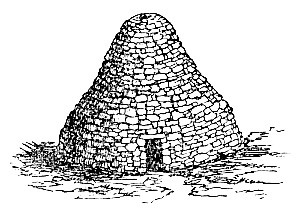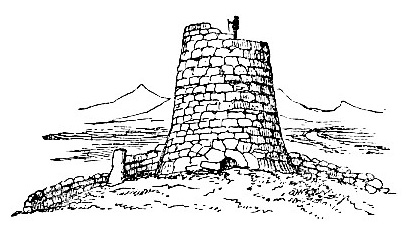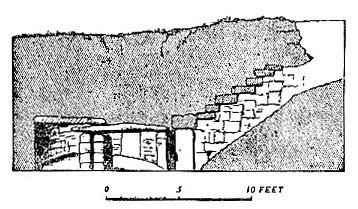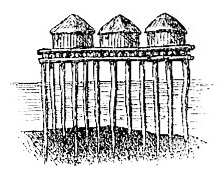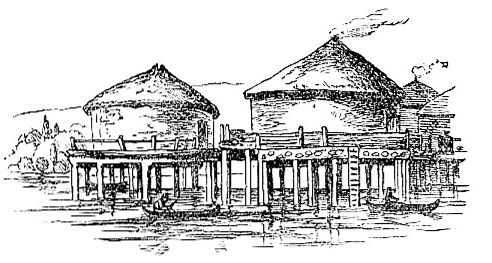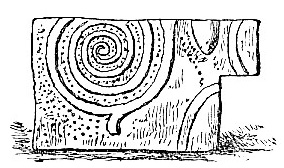1902 Encyclopedia > Architecture > Prehistoric Structures
(B) PREHISTORIC STRUCTURES
The numerous relics of structures left by primeval man have generally little or no architectural value. The only interesting problem regarding them, the determination of their date and purpose, and of the degrees of civilization which they manifest, falls within the province of archeology. The principal specimens of such prehistoric erections maybe classified thus --
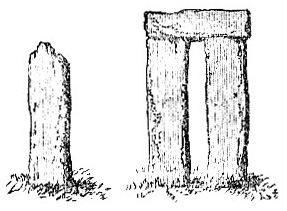
Fig. 1 -- Maenhir and Trilithon
(1) Monoliths (Maenhir, from Maen, a stone, hir, high), or single upright stones (fig. 1). The best example is Carnac, in Brittany. This huge stone, perfect, was 63 feet high, and 14 feet in diameter at its widest part. It is rudely shaped to a circular form, and weighs about 260 tons.
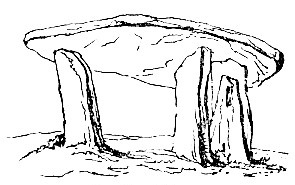
Fig. 2 -- Dolmen
(2) Cromlechs, table-stones, generally consisting of one large flat stone supported by others which are upright (fig. 2). The cromlech is also named Dolmen, from Taal, or Daul, a table and Maen, a stone. A good example of the cromlech is structure known as "Kit’s Coity House," near Maidstone. Other examples occur in different parts of Great Britain and Ireland, and numerous specimens are found in Algeria, in India, in the country east of Jordan, in Guernsey, and near Saumur, on the Loire.
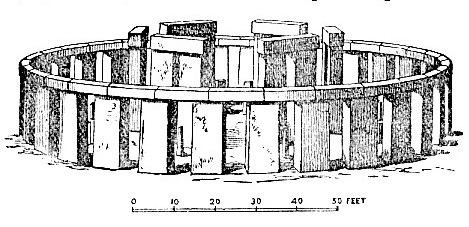
Fig. 3 -- Stonehenge (restored, after Inigo Jones)
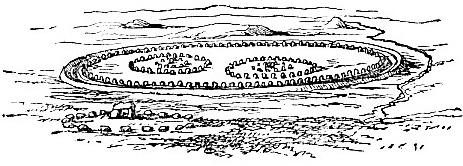
Fig. 4 -- Circles of Avebury (restored).
From Waring's Stone Monuments.
(3) Circles of Stone -- The most important specimen of these Britain in Stonehenge (fig. 3). Other are found at Avebury, in Wiltshire (fig. 4); at Stanton Drew, in Somersetshire; at Stennis, in Orkney;and at Callernish, in Lewis and several have been discovered in the districts around Mount Sinai and Aden. In some circles, as at Stonehenge, as well as separately, are found trilithons (fig. 1), which appear to be a modification of dolmen.
(4) Tumuli -- these include the beehive huts, so called from their shape, found scattered throughout Cornwall, Wales, and Scotland (fig. 5). Similar, but superior, edifices are to be met with Ireland; and of these, New Grange, near Drogheda, apparently a burial mound, is the finest specimen (fig. 6). The design of the "nurhags" (fig. 7) which are found in the great numbers in the island of Sardinia, has greatly puzzled archeologists. It has been conjectured that they were sepulchers, the dead being exposed on their summits. Of the so-called "Picts’ houses" of the Orkney Island, some chambered tumuli, while others may be more properly described as underground dwellings (fig.8).
(5) Wooden huts, the submerged remains of which have been recently discovered in the lakes of Switzerland, as well as in Sweden, in Italy, and in Ireland. These erections, which rose on piles just above the surface of the water, present no features of architectural interest. A specimen of prehistoric sculpture, on stone, taken from ruins in the island of Gozo, in the Mediterranean, is given in figure 11.
Prehistoric remains are separated by a wide gulf from those which now fall to be noticed, inasmuch as, whether or not they led, by improvement in their forms, to anything really architectural, no evidence remains of such progress, and they must therefore be regarded as practically dissociated from anything that we have now to describe.
Read the rest of this article:
Architecture - Table of Contents
Code:
|




